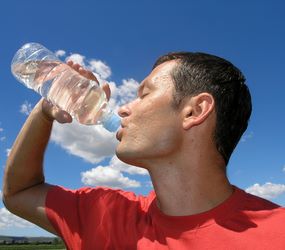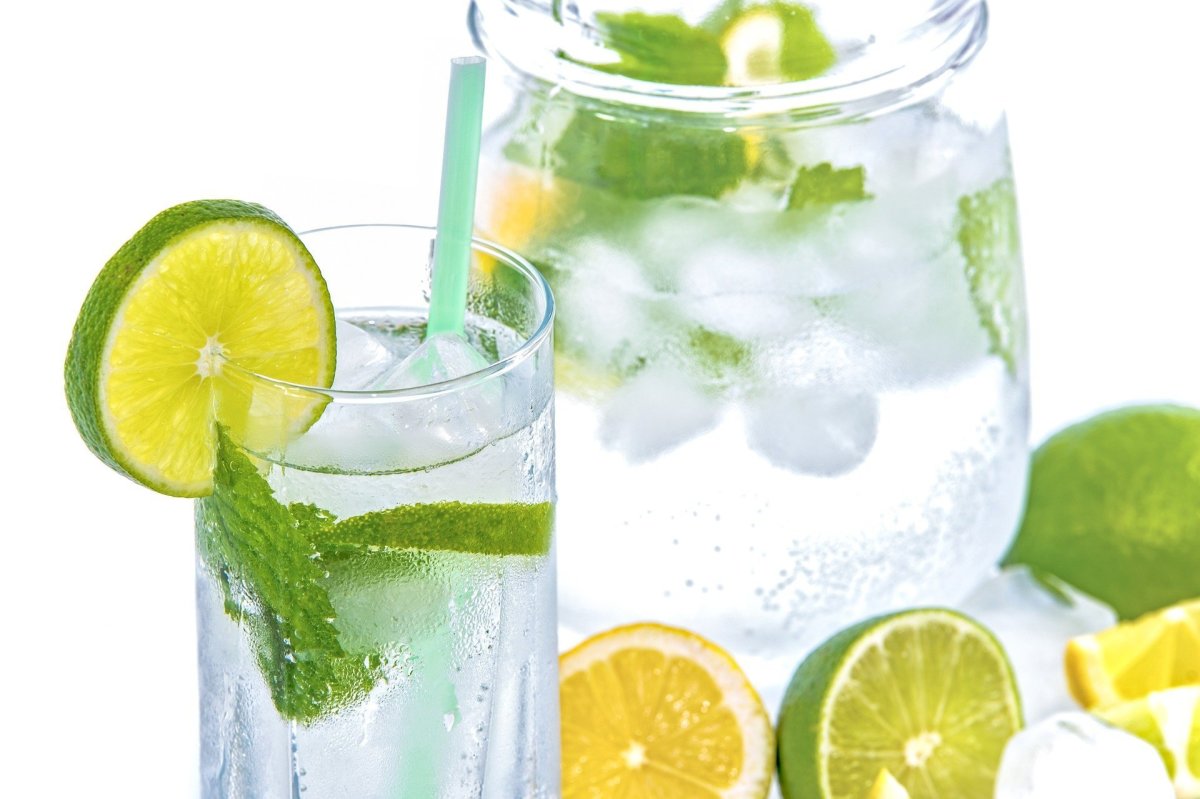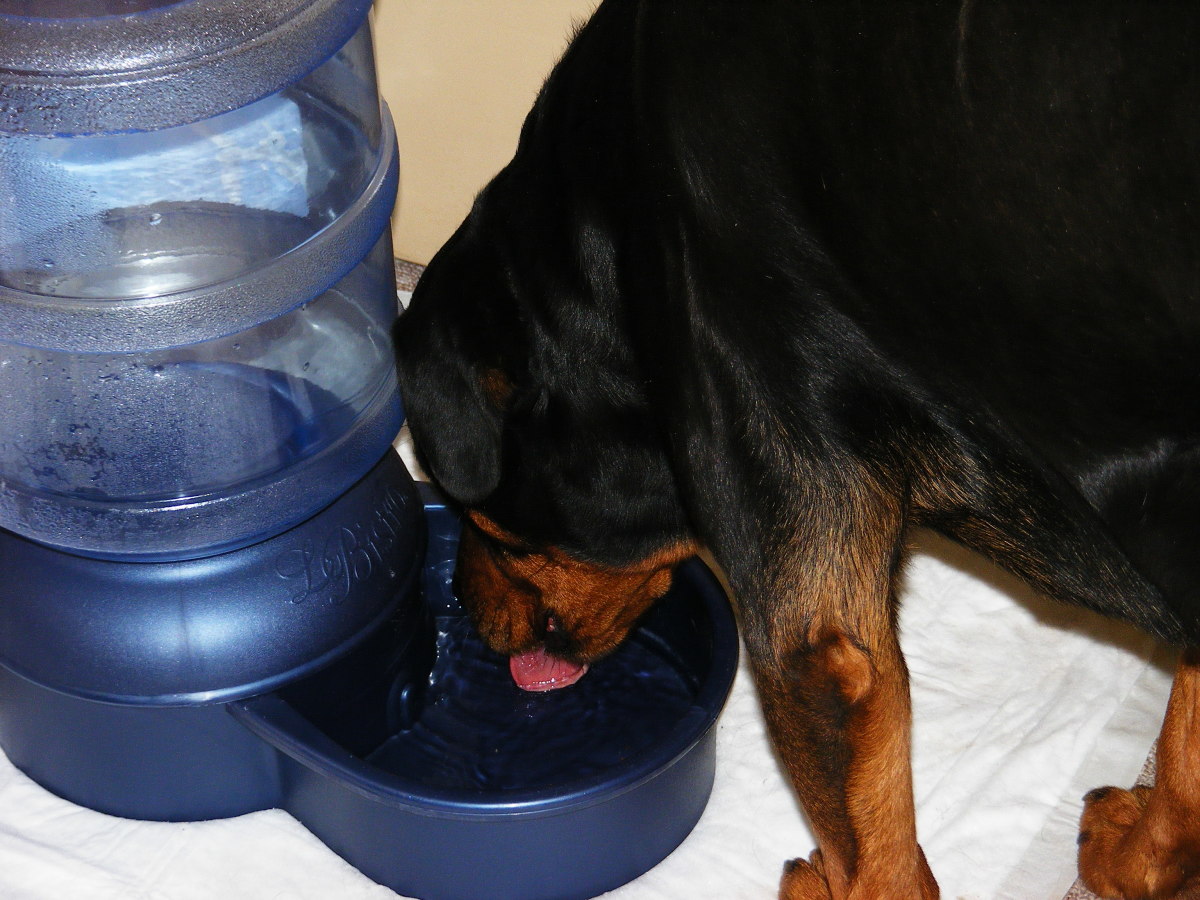Hydration - The importance of Hydrating!

How Many Litres of Water Do You Consume in the Average day?
Do You Like Water?
Hydration
By the time you realize your thirsty you are already 2% dehydrated which is already enough to affect performance, read on to learn more about the function and important of water in our bodies and the effects of dehydration and advice on how best to hydrate.
Hydration is the saturation of a compound or being with hydrogen molecules, we aquire most of our hydrogen from the compound h2o which is 2 hydrogen molecules bound to 1 oxygen molecule, both of which are essential to maintain homeostasis and even survival. We have the potential to survive without food for a matter of weeks, however in the absence of water we cannot survive a matter of days, this is all the more applicable in climates the likes of the Sahara desert.
The body itself is estimated to hold 70% of its body weight in the water which its made up of, each and every of the trillions of cells in our body is surrounded by a watery casing known as the cell membrane.
Water has many functions for example, aiding excretion of waste products, PH balancing and Thermoregulation.
The kidneys produce a substance called urea which it combines with water and waste products ready to be excreted as urine, the water helps in the transport of the waste and functions as a flushing system.
On the PH Scale water is a number 7 (Neutral) therefore its presence variably neutralizes the PH of its surroundings, an irregularity in PH can be potentially damaging to cells.
Our body needs to be a certain temperature to operate properly (37.5 Degrees), During the formation of ATP 75% of the output of the calorie burning is heat, the body is continuously burning calories just to keep it ticking over (BMR), however during sports the requirement Is much higher. “A 65kg individual may burn 865 calories in an hour whilst sparring (Boxing)” – (Anita Bean, The complete guide to Sports Nutrition, 2009 6th ed, p123). The intake of 1g of Glycogen will result in 3g of water needed.
A further example, we consume on average roughly 0.25 litres of oxygen per minute, which equates to the generation of 70 watts of heat generation.
Therefore the body finds itself having to counter balance it, in an attempt to regulate the temperature (Thermoregulation) of the body. The most significant action is Sweating. When the body overheats, water is pushed to the surface of the skin via the capillaries, in order to cool it down.
This has two main consequences, the body will need to intake more fluids to compensate for those lost in sweat and replace electrolytes (Sodium, Potassium, Chloride and magnesium) also lost along with the water to maintain a desired balance.
One litre of sweat will roughly dispel 600kcal of heat energy, this is only 69% of kcal heat energy generated in the aforementioned Sparing session (Boxing).
So how much water should we intake to remain in balance? The most practical methods of determining this are by analyzing urine output volume and coloring or weighing pre exercise and post exercise and offsetting the fluid loss (Going by the principal that 1kg of body weight lost is roughly equivalent to 1 Litre of water lost).
A diluted pale colored urine is said to be optimal, If it is darker it is likely to be too concentrated with waste products and indicates a degree of dehydration.
For further reading on Kidney function and the role of Water in the body; read http://watergeek.hubpages.com/hub/Kidney-Function-and-the-Role-of-Water
Factors affecting the amount you sweat
exercise intensity – The more intense, the more you will sweat.
exercise duration – An exercise of the same intensity that is longer will result in higher volumes of sweat than the same intensity for a shorter duration
Climate – The hotter the climate the more an individual will sweat
individual DNA / Body Composition – Smaller bodies produce less sweat as it has lesser surface area to cool down, in addition to less capillaries to dissipate heat through
Level of acclimatization – the level of which the individual is used to the climate and therefore the degree of which the body has adapted to overcome it. During the south Africa 2010 world cup, the south African players were better acclimatized to the altitude and heat of their own country than say Englands players whose bodies are accustomed to lower temperatures and lower altitudes.
Gender – Males sweat more than females on average.
Dehydration
The failure to replace lost fluids to the necessary level will result in being in a state of dehydration, by the time you have administered the aforementioned methods of determining your level of hydration you are likely to already be dehydrated, the bodies own detector the hypothalamus which monitors the composition within the blood doesn’t detect it and initiate the hormonal thirst senses until you are already 2% Dehydrated, which according to Anita Bean “A loss of just 2% in your weight will affect your ability to exercise, and your maximal aerobic capacity will fall by 10-20%” this obviously will have a negative effect on performance and that 10% less aerobic capacity could prove the difference in sporting events, illustrating the importance of pre-hydration.
Despite the delay in acknowledging thirst, it is still commonly the recommended method of determining when to take on more fluids, trusting your bodies thirst receptors. However not everybody is satisfied with this alone as dehydration is cumulative and to start off in negative balance is undesirable for athletes as its likely to get worse before it gets better which most sports not offering the opportunity to hydrate until the end of the event such as track running, triathlons and long distance events have refueling stations where the athlete can rehydrate but at their own expense as their time still ticks, in sports such as football a minimum of one interval is given to allow the players to rehydrate.
The more dehydrated you are the less priority the body gives to thermoregulation as it deems the precious water it has to be of more use to maintain circulation of the blood, this will result in your body overheating and further impacting sports performance in addition to aerobic capacity.
Body Weight Loss % Aerobic Capacity
0.0 - 100%
1.0 - 95%
2.0 - 90%
3.0 - 85%
4.0 - 75%
5.0 - 70%
Figure 7.1 Fluid loss reduces exercise capacity – (Anita Bean, The complete guide to Sports Nutrition, 2009 6th ed, p86)
The body cant maintain full aerobic capacity as it can no longer dissipate heat at the same rate the lungs generate it due to the lack of fluids.
A decreased aerobic capacity will be detrimental for sporting performance, however it is not the only concern of dehydration as the following table demonstrates not only are there further detrimental effects to performance but it can be damaging to health and even fatal in extremes.
Body Weight Loss % Effect
3.0 Impaired performance
4.0 Capacity for hard muscular work declines by 20-30%
5.0 Heat exhaustion
7.0 Hallucinations
10 Circulatory collapse or heat stroke
10> Potentially fatal
My own adaptation of figure 7.2 (Anita Bean, The complete guide to Sports Nutrition, 2009 6th ed, p87)
Young Athletes are much more susceptible to dehydration and overheating than adults because they sweat less than adults and often fail to recognize or respond to the feelings of thirst. This is why when I have coached young children at the Halifax Centre of Excellence, I incorporate a small interval every 15 minutes in training as a drink break and encourage them to drink even if not necessarily thirsty. The matches at Youth academy level are split into quarters of 15-20 minutes in length opposed to the standard 2x45 minutes imposed by FIFA for adult games for the same reason.
Pre-hydration
Having already established the importance of being in hydration balance before a sporting event, just how much water should you drink before hand?
One formula is 2-3ml per pound of body weight leading up to the event
The ACSM (American College of Sports Medicine) recommend drinking 400-600ml in the 2 hours leading up to the event
Some long distance runners attempt to hyper-hydrate before events but the fluid is likely to get excreted much quicker, however some studies have shown that combining water and sports drinks with glycerol enables a degree of hyper-hydration.
Care must be taken when drinking excessive amounts of fluids as it can dilute the blood stream and upset the harmonious balance of water and electrolytes.
Sports Drinks
Many sports drinks include minerals within the drink itself in order to combat this and recover electrolytes lost in sweat.
The inclusion of sodium also encourages further water consumption and retention, pure water is likely to be excreted much quicker
Sports drinks also include varying levels of carbohydrates to replenish glycogen stores and maintain blood sugar levels, a drink consisting of 4% carbs is called a hyper tonic and a drink containing 4-8% is an isotonic drink, both are absorbed at different rates.
A flavored drink is more likely to be palatable and encourage the consumption of higher volumes of fluid, this is particularly relevant to child athletes.
Post exercise
The main intention is to offset fluid losses, replace electrolytes and replenish glycogen stores, the failure to do this sufficiently can have detrimental effects on your next training session and even competitive event/fixture.








